|
I am so thrilled to have Sarah McIntyre on Wee Red Writer! Sarah has written, co-written and illustrated lots of popular titles for children including the hugely successful Oliver and the Seawigs, which has recently been longlisted for the prestigious CILIP Carnegie Medal with her co-writer, Philip Reeve. You may already know that Sarah has been in the media spotlight of late; and you're about to find out exactly why! This interview is split into two parts in order to allow for a good meaty (and essential!) discussion about the hot topic of #picturesmeanbusiness. 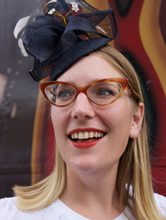 Hi Sarah! Firstly, congratulations on your CILIP Carnegie Medal nomination! I applaud you (loudly!) for standing up for illustrator rights and banging the drum about the importance of illustration in children's books. Can you tell us what happened with the Carnegie Award organisers for anyone who doesn't know? *Note to readers: The CILIP (Chartered Institute for Library and Information Professionals) Carnegie Medal is an annual award recognizing an outstanding book for children and young people. The same body also awards the annual Kate Greenaway Medal for outstanding illustration in children’s books. Thanks, Julie! My experience with the Carnegie Organisers has been so encouraging. The award has built up for me as this big thing you can’t criticise, but they really do listen when we spot things we think are problematic. In this instance, Oliver and the Seawigs was included on the long list, but only credited Philip Reeve. That didn’t make sense to me; Philip and I are co-authors, we brainstormed a lot of the story together and I don’t think its text can be read separately from the illustrations. And it wasn’t necessarily a contender for the Kate Greenaway Medal either; it’s not as fully illustrated as a picture book; it’s somewhere in the middle. Supposedly the Carnegie is an award for writing and the Greenaway is an award for illustration. But I noticed that the Greenaway list still included the writers of the books, while the Carnegie list didn’t include the illustrators. 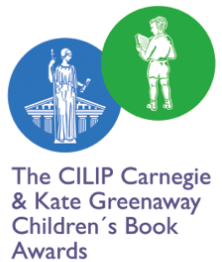 That didn’t seem fair. When I pointed this out in a blog post, the chair of the committee, Joy Court, got right back to me and said that they’d been using data provided from Nielsen BookScan (which only listed Philip as the author), and they were following an old listings template that they really just hadn’t thought about. Within 24 hours, she had the listing changed to include all the illustrators, and she and the committee are going to review some other issues that this raises. (I really hope they create a third award for these so-called ‘middle grade’ books that are often halfway between picture books and text-only novels. They’re not always the most popular books with adults, but they’re absolutely essential in the transition between reading picture books and YA novels.) That’s brilliant! Your efforts have sparked a reform in how we perceive illustrated books (and the role of the illustrator!) So, is co-authorship becoming more prevalent? In my last blog interview with Vivian French (another patron of illustration) we were discussing how much sense it makes for writers and illustrators to collaborate on a book, something she tries to do with all her books. Is it something that publishers need to review, rather than writers and illustrators? I think books have been co-authored for a long time, in the sense that the words and pictures tell different parts of the story and come together to make something different than words and pictures alone could do. Illustrators have always been ‘authors’ in the sense that their pictures work to tell the story, not just echo the text. But in the old days, illustrators often were given a finished text and they created almost stand-alone paintings, sometimes even on a special plate that was pasted into the book. Now printing has developed so that it’s much easier to intertwine words and text. They can work much more closely, and one can set up the joke and the other can provide the punch line. (Those are words from Alex T. Smith; we were just chatting about this subject on Twitter.) Ah yes! Alex spoke about this when I interviewed him. So how does that work for co-authors? What’s your experience? I think perhaps it’s getting more common for writers and illustrators to work together and create something before they present it to a publisher together. With my early picture books, I never even met the writer until after the book was published. But it’s much more fun working with a friend. David O’Connell and I started our book Jampires as a Comics Jam, taking turns drawing and writing each page without telling the other person what would happen, like a game of Consequences. It was the best kind of play, and I loved the story that came out of it. Our picture book was only loosely based on that original Comics Jam story, but that was where we built up our ideas. With Philip Reeve, we had such fun joking around with characters for Oliver and the Seawigs. Cakes in Space was his idea, but his first draft of the story was much more serious, and when we got it back from the editor, I proposed the idea of the food machine and killer cakes, and Philip flew with it. 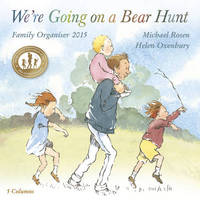 An enduring tale indeed - the book is recognised around the world for Helen Oxenbury's stunning illustrations and Michael Rosen's enchanting rhythm. An enduring tale indeed - the book is recognised around the world for Helen Oxenbury's stunning illustrations and Michael Rosen's enchanting rhythm. You recently posted on your blog about how illustrators are severely overlooked when it comes to Nielsen BookScan Data (used by several organisations as the main data reserve for book details) which list books by author alone. Is this going to be changed? I hope so! My agent Jodie Hodges, and Charlotte Eyre at The Bookseller, are still looking into it. We want to make sure we have all the facts straight before we discuss it with Nielsen. That’s been the problem, hardly any illustrators have any idea how Nielsen works, and most have never even heard of the company. I don’t know very much, but I started to get an inkling something was wrong when Joy Court mentioned the data used for the Carnegie listing, which only included the writer’s name, not the illustrator’s. And then The Bookseller ran an article about the enduring success of the picture book, Going on a Bear Hunt, but only featured Michael Rosen (the writer) and didn’t even mention Helen Oxenbury (the illustrator) which seemed nuts (and I knew Michael wouldn’t approve); it’s a highly illustrated book based on a classic campfire tale, and Helen is an illustration legend. That’s when the penny dropped for me, and I realized just WHY illustrators keep getting left out, even when award panels and journalists should know better; it’s because of faulty data. Nielsen BookScan is where everyone gets the data about books, and can look up how well the books are selling. You can do a search for a writer, and all their books will come up, so you can get an overall sense of their career and economic value. But you can’t search by illustrator. If you type in my name, only two books come up: Vern and Lettuce and There’s a Shark in the Bath, both of which I wrote as well as illustrated. Jampires doesn’t even come up, because you’d have to search for me and David O’Connell together. It means there’s no easy way to gauge an illustrator’s economic value. If business people and the media can’t easily look up our sales figures, they assume we have no sales value - which is wrong, everyone knows pictures are a big part of what sells picture books. And when lists are made, such as the PLR (Public Lending Rights) lists of top-borrowed authors from libraries, again, illustrators get left out. From what I gather, on Nielsen BookData there seem to be two tiers of information, and Nielsen only requires publishers to include the ‘author’ of a book in the first tier, and adding the names of illustrators and translators in the second tier is optional. Some publishers (or more likely their interns) don’t bother including those names. And when Amazon picks up on that faulty data, illustrators have to fill out the ‘form of shame’ to get their names included with their books, and this can take months to process. So we need a two-part solution: publishers really need to be more vigilant when they plug in book information, and Nielsen needs to overhaul a clunky, outdated system. Perhaps a few systems need an overhaul. I recently questioned the Red House Children’s Book Awards, who only listed writer names and left out illustrators such as Oliver Jeffers, Sarah Horne and David Tazzyman. They got their data from The Book People, and when I asked on Twitter, the rep for The Book People said that they collected their own data (not using Nielsen’s), but they were leaving out the illustrators because the computer only lets them type in a limited number of characters. Something as simple and clunky as that! So even co-writers were getting left out because their names didn’t fit. Since then they have added Oliver Jeffers to the list, but others are still missing. You can read more about this on my blog. 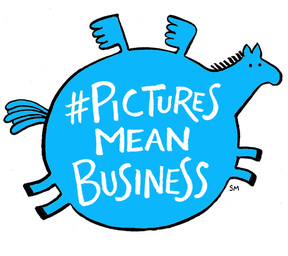 Sarah's clever hashtag allows writers and illustrators to show their support for illustrator recognition on Social Media Sarah's clever hashtag allows writers and illustrators to show their support for illustrator recognition on Social Media I started a hashtag on Twitter - #PicturesMeanBusiness – to try to increase awareness about giving credit to illustrators when people post book covers and illustrations. If people can mention the illustrator, the publicity all adds up and helps us to make a living from our jobs more easily. Sometimes people will share book covers they like and not necessarily know the illustrator or the designer, but at least the writer and publicist should know this information and share it, particularly when they first reveal the cover. By ‘recognition’, we’re not asking for pats on the back. But bookselling is so connected these days to celebrity culture that TV celebs such as David Walliams have a big head-start on sales. If parents, teachers, reviewers etc can also big up illustrators and writers who aren’t on telly, it says something healthy to our kids: ‘Work hard at learning to draw and write, get good at it; you don’t have to have a good face for telly to make a living at this.‘ But right now, this isn’t necessarily the case, and kids aren’t stupid; they can see that. I agree totally! Coming from a children's bookseller: children read pictures before they read words. The illustrations inspire so much imagination and are vital to the child’s understanding of the words – why are we so keen to throw them out of children's books so early on? Does your experience of this differ in different countries? Yes, Brits are traditionally averse to pictures and remarkably visually illiterate. Many people have a really hard time explaining what is going on in a picture, and how a picture works. I think these people feel that having pictures in a book lets the imagination be lazy, and they think that an adult should always conjure up mental images from text alone. My issue with this belief is that it limits adults’ mental vocabulary of images. Even if a book is descriptive, the images we conjure in our heads are usually based on things we’ve seen before, whether they come from life, films or adverts. Why pull all our images from outside books? Quality book illustrations can expand the way we imagine something and put images into our heads that never would have been there, completely new ways of seeing things. Pictures help us imagine better, but they don’t work like films, in showing us almost everything that is taking place; we still have to imagine what happens between each picture. Exactly! Vivian French said the same thing – ‘you don’t get anything out of your imagination, until you put something in to your imagination!’ You’re not alone. What about outside the UK? Americans are a little bit more open to pictures in books, and I think they’ve been publishing picture books for slightly older children (say, ages 8-12) for much longer than we have here. They’re also more proud of their picture book illustrators and celebrate them more. The French and Japanese never graduate from books with pictures; they see it as just another media, like distinguishing between film, photography, theatre and radio. French and Japanese readers will happily switch between text-only novels and comic books. Things are changing in Britain, but people still hold on to a certain snobbishness about picture books and comics, which is why the more literary-sounding term ‘graphic novel’ was invented. People who make graphic novels usually just call them ‘comics’. But the highbrow term keeps reviewers happy. It’s our dirty little secret, liking pictures in our books! I never grew out of reading picture books (despite my teachers telling me I was too old for them) but in school I greatly missed them when we moved on to older reader books – do you think it's limiting to have illustrations removed from books so early on? 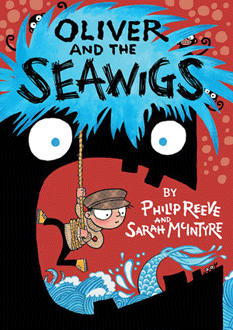 Sarah and Philip's middle grade book has illustrations on every page to enhance the text. Sarah and Philip's middle grade book has illustrations on every page to enhance the text. Yes, I think it’s unfair to demand children go from beautiful illustrated pages straight to scary pages of solid text. When Philip and I made Oliver and the Seawigs, we tested it out on his son, who was ten years old at the time. It was fascinating to watch how he kept reading until he came to the first page without pictures, and then he put down the book. We resolved to have at least one small picture on each page of the first chapter, so a reader could at least get through the first chapter and feel a sense of accomplishment. The Horrible Histories books do this well; they have a picture on every page. And comics do this even better. There’s so much talk about getting boys to read and ‘reluctant readers’, but no one can doubt the success of illustrated books such as the Claude books, Diary of a Wimpy Kid, or Tom Gates books. I’m surprised anyone’s still trying to wean kids off books without pictures. We want kids to read, so let them read things they enjoy, and build a lifelong love of curling up with a book. The other thing I’ve noticed is that kids who might hate the idea of writing a story absolutely love making comics; they grab their pencil and get straight to work. Comics are brilliant for helping kids develop writing and drawing skills; it one skill is a little weak, the other can compensate and pull the other skill forward. I noticed that in making comics with kids who could speak almost no English, they could still tell stories in pictures. And then they’d want to add a few words, just to make the picture story work better, so they might learn how to write some sound effects. Drawing pictures is the best way to get ideas for writing. You can design a character and it’s natural to make that character meet another character and start doing something and talking. Kids are much happier seeking out words when they’re in the middle of a story that needs them. Yes it’s surprising really, when you look at Publishers who provide for dyslexic readers – the books are illustrated to a later age – because it helps the reader! On that note, we'll conclude Part 1 of our interview. Thank you for giving us so much food for thought about the importance of illustration and fair representation for illustrators! If you want to show your support you can use #picturesmeanbusiness on Twitter and you can find out more about the campaign on Sarah's blog. You can follow her on Twitter and don't forget to check out her brilliant website! Part 2 will be up very shortly for an insight into Sarah's life as an illustrator!
15 Comments
Best-selling children's author, Vivian French, has written more than 200 books (including the hugely popular Tales from the Five Kingdoms series) and her illustrious career spans 25 years! Vivian regularly tours around schools and festivals, wowing kids all over the country. She also teaches at the Edinburgh College of Art (ECA) where she passionately champions the importance of illustration in children's books. She joined me for tea, cake and seriously good chat! 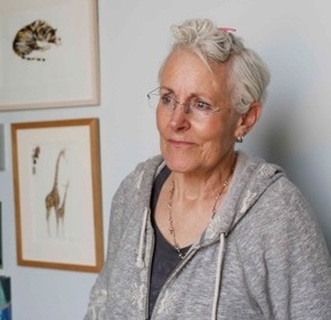 Hello! Thank you so much for joining me on the Wee Red Writer Book Blog. You're very welcome, thank you for having me! I'm going to jump right on in with my first question! What is your desert island book? I Shall Wear Midnight by Terry Pratchett has to be it, it’s the fourth in a series actually, but I don’t think you have to have read the others to appreciate it. I really love it because Terry is so good about having really strong women! In particular strong older women who are very knowledgeable and wise. It's so funny as well, he just makes me crack up! My other desert island book is the princess bride. It’s just fantastic. I've only seen the film! Oops... Well you know the film was brilliant – William Golding (the author) did the screenplay for it, so it’s a dead ringer for the book - but the book has even more going on. It's on the reading pile! So Vivian, I would really love to know where you get your inspiration from, apart from the wonderful Mr. Pratchett of course! Oh! I always get very grumpy when people ask me about where I get my inspiration from! I always think it’s a bit like being a caterpillar – you munch up all sorts of things and they kind of come out, hopefully not as nasty little squirmy grubs! I was lucky – my Dad read to me since I was absolutely tiny and we lived in a house so full of books. We went to the library every Friday and got more books, and he read to us. I used to listen to Children’s Hour and the stories were absolutely fabulous – I love being read stories. The stories my Dad read me were fairy stories like Andrew Lang's Fairy books, and all of those sorts, and I absolutely loved them. I think particularly with something like the Five Kingdoms they really inform what I do. It makes sense to me that you feel your childhood was so important in influencing the career you have now - I know that the books I read up until about 12 left the biggest impression on me, and you see that running through the books I love to read now, as an adult. Yes, they are so important! You see it with illustrators too, if you talk to an illustrator about the books they loved when they were little you can see where their style comes from – just look at Nick Sharratt’s list of books he read up until he was about that age. If you put them all together and mix them with art college training, he is what you get! Absolutely! Do you find that the little details from everyday life with your family end up in your stories? Ohh yes! I’m always saying to kids to watch what’s going on around them, to which they respond ‘oh but I have to use my imagination’… Well I think using your imagination is like wearing an invisible bucket on your head and you'll never be able to get anything out of your imagination until you put something in to it, and all that observing and listening is fuel for that.
It’s the interaction that’s so much fun isn’t it? You can get just a little morsel from one of the kids that before you know it has bloomed into something magical for the whole group. Yes exactly! So Viv, you teach at the ECA and you’re incredibly passionate about illustration. It seems to be the norm that most writers never even meet the illustrators of the books they've written, but I know you work closely with a lot of the illustrators for your books –what’s your take on writer/illustrator relationships? Should that be changing in publishing? I’ve been writing books for 25 years and I asked to meet the illustrator of my first book – not in any way, shape or form to say, ‘I think the character should look like this’ but in fact to say ‘What do you think and how can I change the character to suit your illustration?’ I think the relationship varies so much from author to author and illustrator to illustrator and yes sometimes writers never meet their illustrators. I think some of them just aren’t bothered. I love it because I just love that interaction. I've got a book coming out in the summer with Angela Barrett for which I wrote the text and in it there’s a bit where the princess is brought a lot of gifts, and Angela just drew what she wanted to draw, and I then went back and changed the text to fit with her illustration. I love that, because it means she’s really invested in that book and that story, and it’s just as much hers as it is mine. It’s absolutely brilliant. 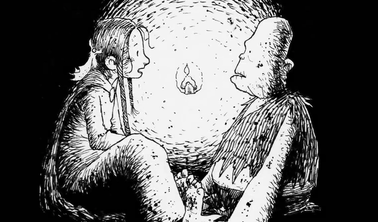 Ross Collins' illustration of Gubble is exactly how Vivian pictured him. Ross Collins' illustration of Gubble is exactly how Vivian pictured him. It sounds like fun! I watched a wonderful interview of you with Ross Collins, who illustrated the Tales from the Five Kingdoms series, and when you were talking about the character Gubble, it seemed as if Ross has almost picked him right out of your head. How much influence did you have over how he would look? Because of the acting background in the theatre, when I imagine my characters I always know how the talk and how they move, and how they look. I was so lucky with Ross – he and I get on so well, and I think he has the same sort of mind-set. So when he illustrates a character I recognise them, it’s just absolutely spot on. That happens quite a lot, and I've worked with a lot of illustrators over the years. In fact I think there’s only two I haven’t met!
It’s fascinating that one can inform the other in that way. Talking about the writer/illustrator relationship – it’s been very much a focus for media attention in the last few months, fuelled by the illustrator Sarah McIntyre raising the question of co-author recognition between writers and illustrators in the case of the Carnegie Award. Is this heralding a change? Is co-author recognition the future? Yes, I’ve been waving the illustrator flag for years! At ECA we actually categorise our books by the illustrator. I had a major campaign last year because public Lending Right list the most borrowed authors, for instance Julia Donaldson would be number two or three, Axel Scheffler however will be listed somewhere around 200. I think that’s totally appalling – they’re just as much his books as hers. The Society of Authors took it up and I’m hoping that this year will see the recognition of a book by an illustrator. There are still some authors that talk about ‘my illustrator’ and that’s just not the case – it’s the illustrator of the book. I get quite cross about people who do that. That’s why you’re such a brilliant patron! So what are your top three pointers for illustrators about to embark on their careers? Character! You have to establish a character we can relate to – whether it’s a nasty little thing we simply hate, or something we love – it has to have an identity, an individual identity. It has to have some kind of feeling – all books are about feeling. Also, it's important to think simply. It’s almost like writing a joke – it can be that simple. Even if it has a serious meaning behind it. I love Ed Vere’s book ‘Banana’ where ‘Banana’ is pretty much the only word used to tell the story, right until the end, where we hear ‘please’, and it’s just brilliant! It’s so simple but it says so much. It teaches about caring and sharing, but in no way shape or form is it moral. That’s something students sometimes sink into, they say ‘Oh but I want to tell children that’s it’s better to be kind’ and that’s a killer. No one wants to be told that they need to be kind, ever. It’s enough to make kids want to go straight out the window! So nailing character, feeling and simplicity are key for budding illustrators. What if an illustrator wants to write and illustrate but they don’t have the confidence as a writer? At ECA they are encouraged very much to illustrate their own writing. In the first year students look at storytelling in all kinds of different forms. Some of them will never really want to write but others are really very good. I’ve had illustration students who have left illustration to become writers, having discovered it through illustrating stories. Did Catherine Rayner find her voice through illustration? Oh Catherine was outstanding right from the beginning, she always had a very clear understanding of how a story works. Philip Reeve is another writer who also illustrates very well, though he focuses on the writing side of things. It’s all telling stories isn’t it? Yes! I got a doodle in my ‘Oliver and the Seawigs’ book along with a doodle from Sarah McIntyre who co-wrote and illustrated it! They were just fabulous. So, moving on from illustration! What is your favourite book to read aloud? I love the Just So Stories by Rudyard Kipling, because the voices are so brilliant. I liked the Beginning of the Armadillos best, 'Can't curl, can swim-- Slow and Solid, that's him! Curls up, can't swim-- Stickly-Prickly, that’s him!’ I love that. Ah the actress! You’re so good at doing voices. So here’s a wee cheeky question – can you tell us who your favourite character is from your own books? Oh! That’s a tricky one. I think I do have a favourite. Queen Bluebell, who is the queen of Wadingburn in the Five Kingdoms series. I suspect… or have a nasty suspicion that I am turning into her! She’s a kind of combination of a lot of my aunts' and my grandmother. I love Bluebell, she has a lot of adventures, and she’s not afraid to go out in the hunt for more. Now there’s a character will could all do with a little bit of! I know you’ve just spent a week in Birmingham doing events with lots of lovely kids so I might know the answer to this next question! But – what is the absolute best part of your job? Yes, it is talking to the children. When you get a child talking about a story that you’ve invented and their eyes are just shining – what a privilege! To be able to share that with them. I do like standing on the stage too – that’s the actor in me! What’s the worst part? Oh, when it goes wrong. I always say to kids you have to plan, plan, and plan your stories! And I do plan, and somehow I end up going off that plan and I can't, honestly, truly, with my hand on my heart, I can't see how to resolve it. And then I’m panicking and thinking oh my god! I have had a few sleepless nights over plots not going right. Is that down to an over-active imagination as opposed to the ideas aren’t coming, or writer’s block? Yes – there’s so many possibilities! And you have to be able to cleverly solve every problem. I don’t get writers block – my mortgage sees to that! So do you find yourself thinking ahead down every avenue before you settle? Yes! I have this analogy – it’s a bit like raspberry ripple ice-cream. When I’m chasing an idea it’s like chasing the raspberry swirl. You land on it and chase it and then uh-oh! You’ve reached a dead-end. Or I think I’ve solved something and then I realise I haven’t. I hope any budding writers take heart! I think people can be so hard on themselves to be perfect. Yes – and you never get there. Someone said to me ‘Oh you’ve been doing this for 25 years it must be so easy now!’ and it’s not! If anything it’s harder. I have these in-built voices of my editors in my head now – ‘Have you followed that through Viv?’ and I cry ‘No!’ I’ve been very lucky to work with some phenomenal editors, and because of that I self-edit dreadfully, because I keep re-writing it to get it right! Are you working more closely with editors now than you were in the beginning? It’s about the same. It’s perhaps more collaborative now. Working with an editor is a bit like getting married – you have to respect them. So you don’t get writers block. Do you know anyone who does? Can you offer any advice to writers who are struggling to find their story? Martin Waddell who wrote the glorious ‘Can’t You Sleep Little Bear?’ had a spell of writers block, and I think all you can do is just get a little bit of distance from it. My Dad told me that Homer said whenever he wrote something he would put it away for 5 years! It makes sense – if I pick up a book now I wrote 5 years ago I see a lot I could have written differently. Good advice. What’s your physical process for writing? I know you sometimes write on your iPad when travelling around the country – is that when you’re most productive? It depends on the weather! Where I write at home is quite cold, so it’s fine when the weather is nice, but if it isn’t I move into the sitting room where I crouch over the fire like an old biddy! I love writing on my iPad on trains. I’m thinking of applying to be writer in residence on East Coast trains or something! I would get so much work done! I think you're on to something there. Are there any other places you go to write, or that inspire your writing? I love visiting the National Museum of Scotland. There’s just so much to see. It’s a great place for head-space isn’t it? Absolutely! I have been so many times and I always see new things I haven’t spotted before. I love the macabre things and the Egyptians. There’s a wonderful Viking skeleton in the basement of a young man, and they found the bones of a much older woman buried with him, but she was buried much later on. I always wonder who she was – his wife? His girlfriend? Maybe she loved him and he never knew! 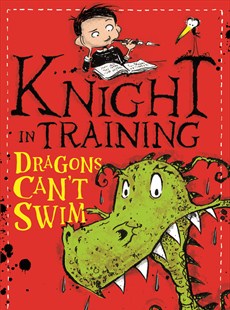 Well it’s clearly an inspiring place for a writer! Talking about new ideas – anything exciting coming up you can share with us? You mentioned your book with Angela Barrett… Yes! It’s out on June 4th and its called The Most Wonderful Thing and the illustrations are absolutely fabulous! And the design is brilliant too, which was done by Elizabeth Wood at Walker Books. I also have the first in a series of six out in April, called Dragons Can’t Swim – Sam J Butterbiggins, Knight in Training which is illustrated by the very talented David Melling! How exciting! A huge big thanks to Vivian for taking time out of her packed schedule to chat to me. You can find out more about Vivian on her website and follow her on Twitter! My next interview will be with a wonderful writer and illustrator who’s been causing a bit of a stir! Keep your eyes peeled... |
More posts coming soon...
Archives
July 2016
Categories |
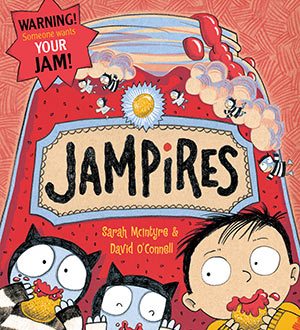
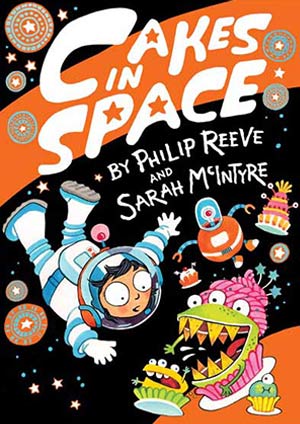
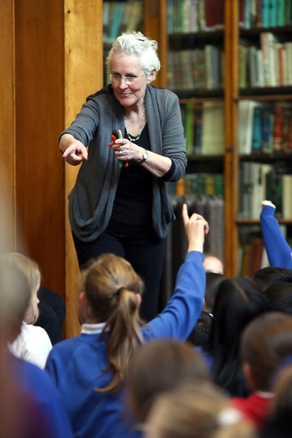
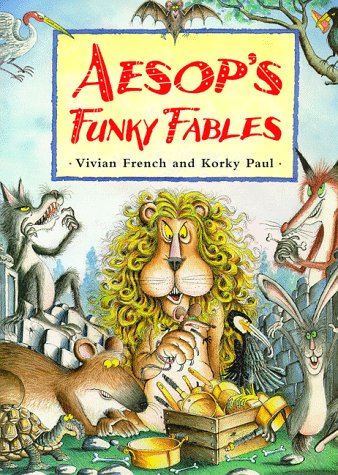
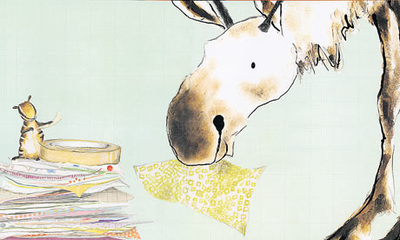
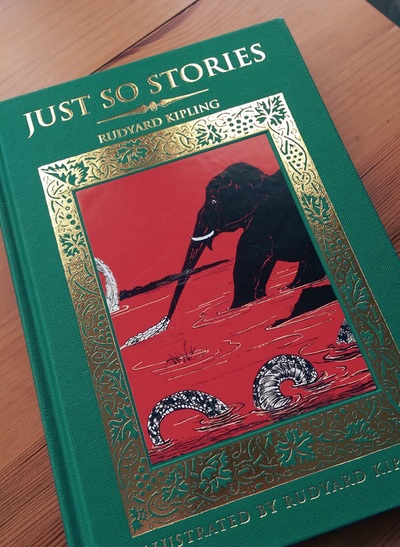
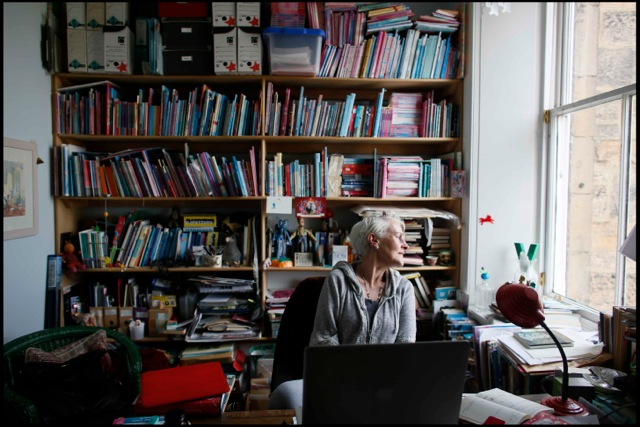

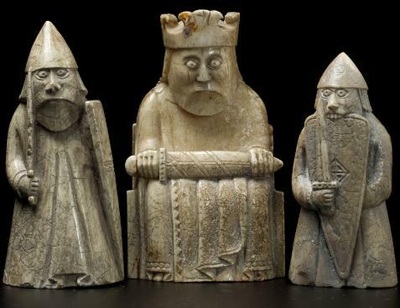
 RSS Feed
RSS Feed